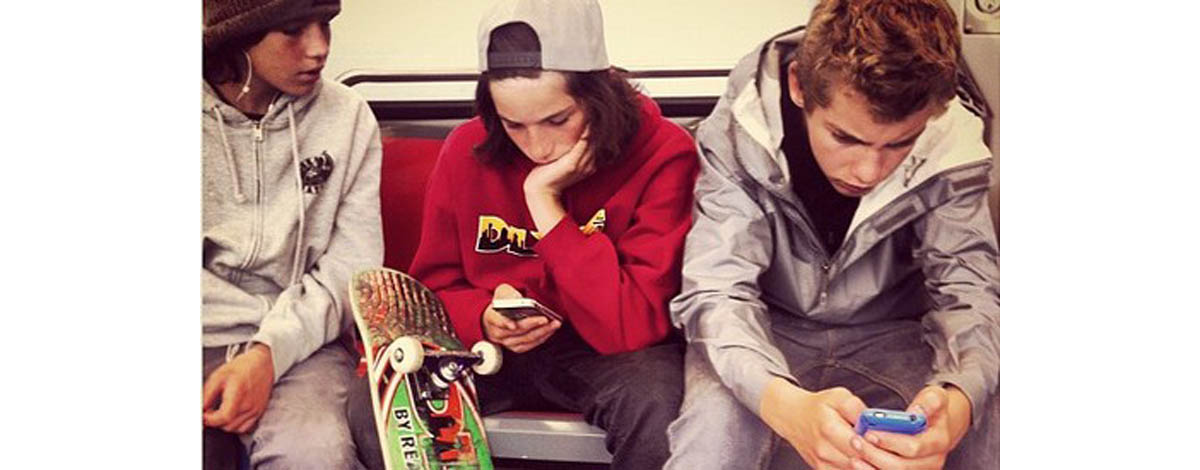Table of Contents
Racy messages aren't an invention of the Internet age. Probably some nineteenth century lothario tried to invent the forerunner of sexting (sending a sexy message, or nude image, by cell phone) by telegraph. But the proliferation of social media sites today makes parental monitoring of their children's safety a daily task.

An astonishing number of parents and grandparents, however, aren't aware of the seriousness of the problem. Although the dangers of social media have become increasingly well-known as its popularity keeps rising, teenagers are surprisingly good at hiding important things from their parents. In some cases, teens you think are safe in their bedrooms are interacting with predators.
Ten Surprising Statistics About Sexting
Research sociologists in the United States have been collecting and publishing data regarding the relationships between sexually-oriented communications and sexual activity in American teens.
Here is part of what the experts have found:
- A survey of 763 teens by sociologists at Virginia Commonwealth University found that 44% had sent a nude or semi-nude photo of themselves to someone they had not met in person in the last month.
- Of the 44% that sent "sexts," 32% engaged in sexual intercourse for the first time with the recipient of the message.
- Many other youths send sexually explicit messages to their long-term sexual partners.
- A study at the University of Michigan found that 95% of sexts are two-way, and that only 2% of teens routinely send sexts without getting a response.
- In the University of Michigan study, 13% of teens receive sexts but don't respond to them (which suggests some teens send multiple sexts, often unsolicited, without getting any response).
- Sexters are more likely to engage in risky sexual behaviors, but they do not have more sexual partners than non-sexters.
- Adolescents who have not yet begun to have sexual intercourse are more likely to report feeling uncomfortable when they are asked to send a sext.
- Hispanic females, of all ethnic groups surveyed, are the least likely to send sexually explicit photos of themselves.
- Adolescents are unlikely to use sexts as "leverage" to obtain sexual favors, for example, threatening to post photos online. Adult sexual predators who receive sexts from adolescents, however, are more likely to blackmail teens to receive sexual favors, such as actual sexual intercourse or disrobing on Skype.
- Sexting is not used as pornography, that is, as an alternative to "real world" sexual behavior. Sexting is a prelude to real world sexual behavior. It is modern-day foreplay, but sexting isn't always welcome.
Treatment of Sexting as Pornography
Even though teens may not intend sexting to be pornographic, most US states treat teen sexts as child pornography —and even children can be prosecuted for creating, transmitting, or possessing child pornography. A research team at the University of New Hampshire identified 3,417 cases of teens arrested for child pornography by 2,712 police departments in the USA in 2008 and 2009. In some cases, the images they sent were of themselves. In other cases, teens share sexts they received from others with their friends or on the internet.
Often teens are given an opportunity simply to erase illicit images, but thousands of teens have gone to jail for sexting. A criminal record for a sexual offense, of course, can ruin a young person's life, as can an encounter with a predator. It's possible for teens to get as much as 5 years in prison for receiving, storing, or sending a text, more if the offense is "aggravated," when the teen collaborates with an adult.
And, ironically, teens incarcerated for pornography are almost certain to encounter predators as a result. Congressman Ed Markey introduced a bill into the US Congress to provide federal guarantees that children 15 and under who send sexually explicit images be given an opportunity to erase them to avoid criminal charges in 2013. However, in 2023, each state has its own set of laws (or none at all). Concerned parents can view an up-to-date list of US sexting laws here.
- Benotsch EG, Snipes DJ, Martin AM, Bull SS. Sexting, substance use, and sexual risk behavior in young adults. J Adolesc Health. 2013 Mar. 52(3):307-13. doi: 10.1016/j.jadohealth.2012.06.011. Epub 2012 Aug 14.
- Fleschler Peskin M, Markham CM, Addy RC, Shegog R, Thiel M, Tortolero SR. Prevalence and Patterns of Sexting Among Ethnic Minority Urban High School Students. Cyberpsychol Behav Soc Netw. 2013 Feb 25. [Epub ahead of print].
- Photo courtesy of dlytle on Flickr: www.flickr.com/photos/dlytle/6961324640
- Photo courtesy of jonjon_2k8 on Flickr: www.flickr.com/photos/jonjon_2k8/340305918


Your thoughts on this